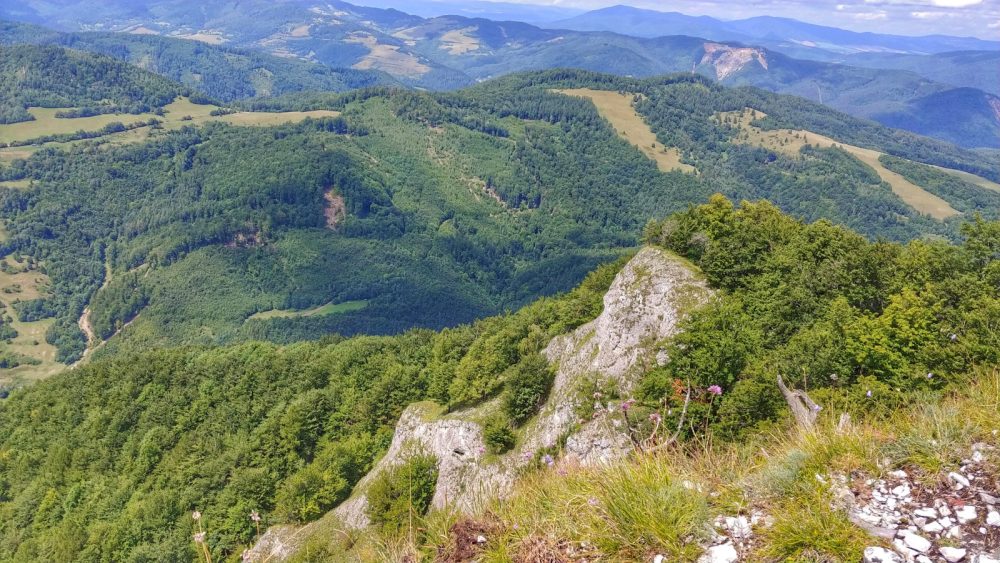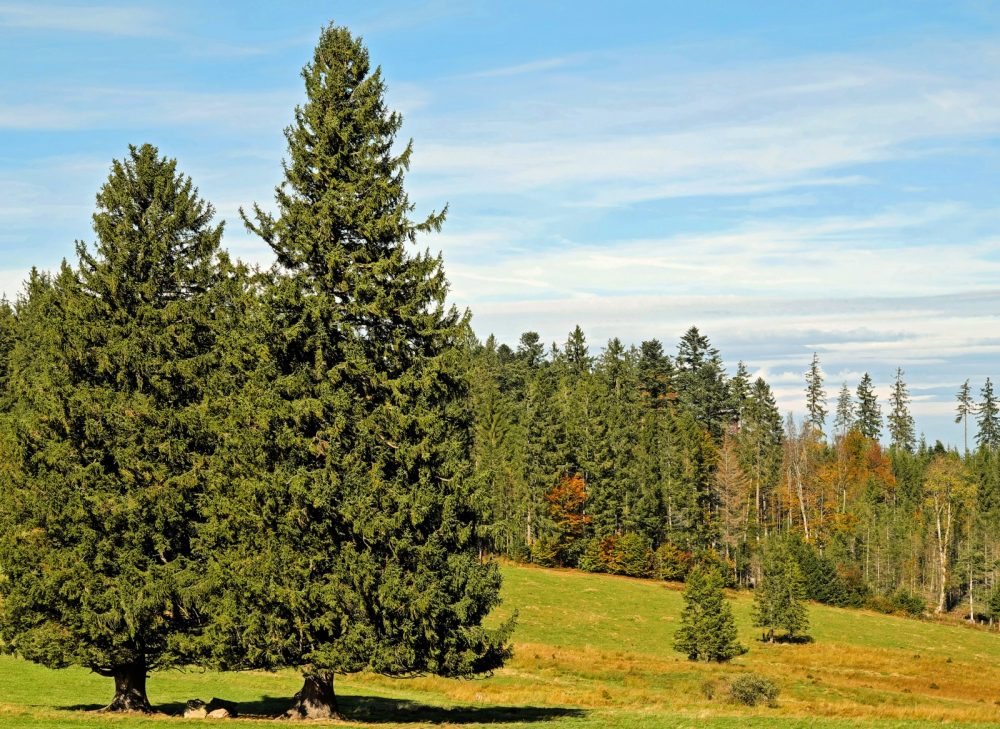Silver fir can be the key tree species of future forests
Global climate change, represented mainly both by air temperature and drought increasing, has a negative impact on forest ecosystems. Their productivity and carbon balance is changing, the rate of damage to trees by insects, diseases and calamities is increasing, as well. As a result of the expected increasing of climate extremes in the future, there is a high probability of still higher forest damaging together with substantial changes in individual forest tree species representation.
Regarding that, the management of forest ecosystems will require new approaches. In many cases, it will be necessary to convert homogeneous stands into structurally differentiated and more species-rich forests. As for ecologically and economically effective regulation of species composition in complicated vegetation structures, it will not be possible to approve without deep knowledge about specific reactions of tree species to a changing climate.
In selection forests, it will prevail mainly shade-tolerant trees (fir, spruce, beech); eventually sunny tree species, which present usually just a temporary admixture in these stands (pine). Such a mixture of tree species creates good conditions for the creation of stable forest ecosystems, even in connection with the predicted climate change.
 Photo: Volovské vrchy upland from the Folkmarské skaly, Eastern Slovakia
Photo: Volovské vrchy upland from the Folkmarské skaly, Eastern Slovakia
However, the differences in growth rhythm, requirements for environmental conditions and sensitivity to climatic conditions of tree species, these all factors present several questions. As one of them, this is the choice of the optimal species composition with regard to their future perspective. In addition, in the case of structurally differentiated forest stands, it is also necessary to take into account the social status and age of these tree species individual trees, as there may be significant morphological and physiological differences between trees with different dimensions. Such trees are responsible for the different growth response and sensitivity of individual trees to climatic factors.
These problems were subject of attention, which scientists of TUZVO Zvolen paid them. Their results and findings were published in the paper Rastové reakcie ihličnatých drevín na meniace sa klimatické podmienky vo výberkovom lese / Growth reactions of conifers on changing climate conditions in selection forest – a case study (Reports of Forestry Research 3/2022).
The age structure was analysed and long-term growth trends were described, together with identification of climatic factors influencing growth of trees in the mixtured selection forest. The hypothesis about silver fir as the most prospective coniferous tree species in the climatic changes period, together with presumption indicating medium layer of forest trees level as less sensitive against climatic factors in specific conditions of structurally differentiated forest, had been tested, too.
The research activities were provided in mixtured selection forest stand located in central part of Volovské vrchy upland, Eastern Slovakia. The forest stand with an area of 13.7 ha is located at an altitude of 500–580 m above sea level. The dominant tree species in the stand is silver fir, mixed with Norway spruce, Scots pine and European beech. Rarely, maple and ash are also growing here. The form of individual mixing of tree species prevails.
In the frame of research, there has been confirmed the positive growth trend and relatively high resistance of silver fir against negative consequences of climatic factors in the 1901–2018 period. Therefore, it is possible to assume an increasing representation of silver fir mainly if compared with Norway spruce proportion due to its sensitivity to increasing temperature and drought. A gradual decreasing of Scots pine representation is highly probable, too.
 So, silver fir can thus be supposed as the key tree species in the creation of differentiated stand structures in the future. But its reaction to the gradual increase in climatic extremes and the increasing competitive pressure of beech, this can be still other question.
So, silver fir can thus be supposed as the key tree species in the creation of differentiated stand structures in the future. But its reaction to the gradual increase in climatic extremes and the increasing competitive pressure of beech, this can be still other question.
As the age analysis of the trees confirmed, the differentiated structure of the investigated stand is not only the result of the gradual emergence and growth of trees in the lower layers, but it can be the result of large and strong competition between level trees with more or less identical age over a long period of time. Therefore, the dimensions of trees of the same age can differ significantly in a selected forest. Regarding that, it makes more sense to focus silviculture care on reaching the thickness of the trees, than on their physical age.in the practical management of multi-layer stands,
Since the 1970s, a consistent increasing of forest tree species growth has been documented as a result of air temperature increasing, together with nitrogen deposition and atmospheric CO2 levels increasing, as well. Mainly silver fir benefited from the combination of these factors. The widths of the silver fir tree rings in the middle and upper layer continuously grew and by the end of the monitored period reached the same values as at the beginning of the 20th century. This trend was not significantly influenced by the fact that the studied stand was in the past under the strong influence of emissions, to which silver fir reacts particularly sensitively.
On the contrary, in the case of Norway spruce and Scots pine, the width of the tree rings decreased significantly in the last 20-30 years, despite the substantial improvement of air quality in the area of interest. In addition to the influence of pollution, climate change, mainly rising summer temperatures and repeated droughts, it played a decisive role in the reduction of spruce and pine growth.
Authors of the case study: Jaroslav Vencurik, Denisa Sedmáková, Miroslav Bača, Peter Jaloviar, Stanislav Kucbel, e-mail: vencurik@tuzvo.sk
The case study Growth reactions of conifers on changing climate conditions in selection forest can be downloaded here.
Prepared by Ing. Jan Řezáč, e-mail: rezac@vulhm.cz
